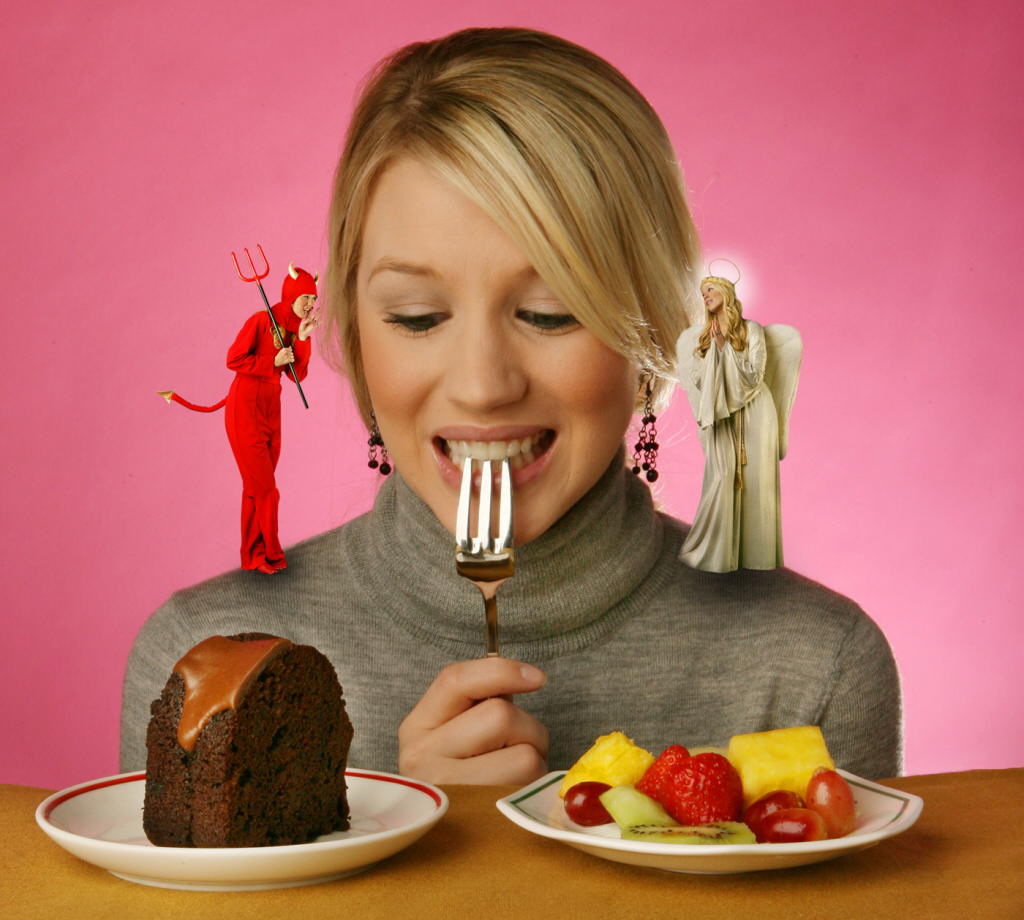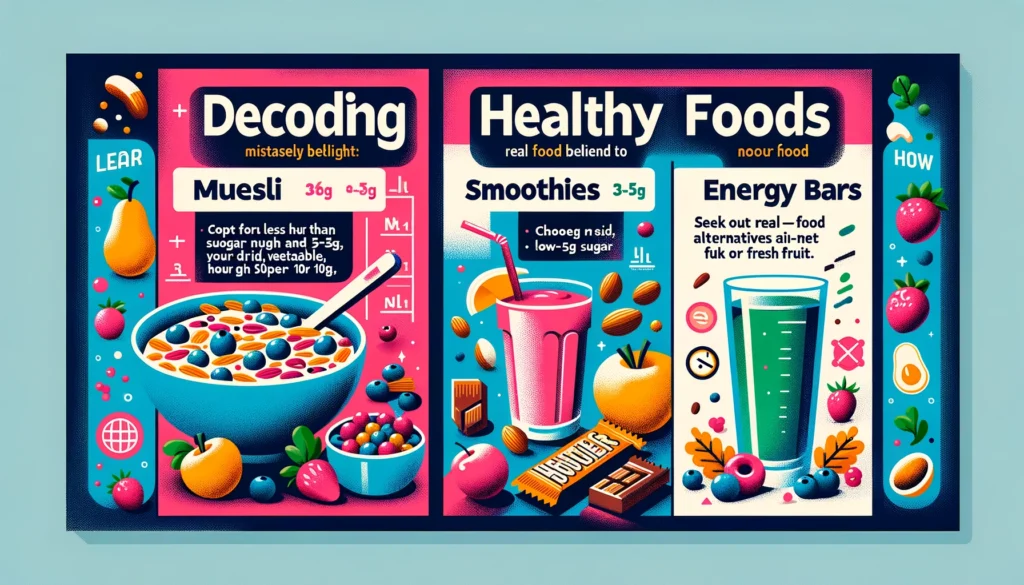Decoding “Healthy” Foods: What’s Really Good for You?
Clever marketing makes many foods seem healthier than they really are. Let’s face it: we’ve all been duped by fancy food labels at some point.
Buzzwords like “all-natural,” “organic,” and “packed with vitamins” can make us quickly toss items into our shopping carts without a second thought. But it’s time to peel back the label and see what’s really lurking in those so-called “healthy” foods.
Muesli: More Than Meets the Eye
Getting Your Portions Right
- The Lowdown: A proper serving of muesli is only about 25 to 50 grams—that’s roughly 2 to 4 tablespoons, depending on the brand.
- Sugar and Fat Watch: Aim for a muesli with less than 10g of sugar and 3 to 5g of Fat per 100g. And remember, keep your serving size in check to match your energy needs, especially if you’re eyeing weight loss.
Muesli: A Breakfast of Champions?
| Fact | What to Do |
|---|---|
| Serving Size | Aim for 25–50g (2-4 Tbsp), depending on the brand. |
| Sugar Content | Choose options with <10g of sugar per 100g. |
| Fat Content | Look for muesli with <3-5g of Fat per 100g. |
The Takeaway: Not all muesli are created equal. Check labels carefully to ensure you’re not accidentally overdoing it on sugar and Fat.
Smoothies: Not Always a Smooth Choice
The Sugary Truth
- Reality Check: A typical 340 ml store-bought smoothie can pack as much energy as eight slices of bread and be loaded with sugar, thanks to sweetened yoghurts, heaps of fruit, and added sweeteners like honey or agave syrup.
- Veggie to the Rescue: To cut down on the sugar rush, opt for veggie-heavy smoothies with spinach, kale, carrots, or cucumbers.
Smoothies: A Sugar Trap in Disguise
| Fact | What to Do |
|---|---|
| Caloric Content | A 340 ml store-bought smoothie can equal 8 slices of bread in energy. |
| Sugar Content | Many are high in sugar due to sweetened yoghurts and added sweeteners. |
| Better Choice | Opt for smoothies with a higher vegetable content to lower sugar intake. |
The Takeaway: Store-bought smoothies can be misleadingly high in sugar. Making your own with a focus on veggies is a healthier choice.
Energy Bars: A Closer Look
Chocolate or Energy Bar?
- The Twist: It might shock you, but some energy bars are higher in calories than a chocolate bar and can even rival a full meal’s energy content. Watch out for sneaky sugars that spike and then crash your blood sugar, leaving you tired and hungry.
- Better Alternatives: Instead, consider reaching for 30g of lean biltong, fresh fruit, wholegrain crackers with a dab of peanut butter, a dried fruit bar, or a handful of home-roasted chickpeas.
Energy Bars: A Convenient Snack or Hidden Calorie Bomb?
| Fact | What to Do |
|---|---|
| Caloric Comparison | Some bars are higher in energy than a chocolate bar or a full meal. |
| Sugar Content | Hidden sugars can lead to energy spikes and crashes. |
| Healthy Alternatives | Choose lean biltong, fresh fruit, or wholegrain crackers with peanut butter instead. |
The Takeaway: Don’t be fooled by the “healthy” label on energy bars. Always read the nutrition facts and consider whole food alternatives.
Unmasking “Healthy” Foods: A Closer Look at What You’re Really Eating
Navigating the world of “healthy” foods can be tricky, especially with all the clever marketing tactics out there. It’s important to arm yourself with knowledge to make informed decisions about what you’re putting into your body.
Below, we’ve broken down some common health food culprits, providing you with the hard facts about what they contain and offering better alternatives for your diet.
FAQs About Navigating “Healthy” Foods
How can I really tell if something is healthy?
Look beyond the marketing and check the nutrition label. Pay attention to serving sizes, sugar, Fat, and calorie content. Don’t just fall for the health claims on the front of the package.
Is it bad to eat muesli or energy bars?
Not necessarily, but moderation and wise choices are key. Opt for versions with low sugar and fat content, and watch your portions.
Can smoothies be part of a healthy diet?
Absolutely, but make them yourself so you can control the ingredients. Focus on vegetables and use fruits sparingly to keep the sugar content in check.
How can I avoid falling for marketing tricks?
- Read the Labels: Always check the nutrition facts and ingredient list.
- Know Your Portions: Be aware of what a healthy serving size looks like.
- Focus on Whole Foods: Whenever possible, choose whole, unprocessed foods.
Are there any truly healthy convenience foods?
- Yes, but they are the exception rather than the rule. Look for items with minimal ingredients, low in added sugars and unhealthy fats, and high in nutrients. Examples include unsweetened Greek yoghurt, raw nuts, and fresh fruit.
Conclusion
In a world where marketing often blurs the lines between healthy and hype, it’s important to take a closer look at what we’re really eating. Whether it’s muesli, smoothies, or energy bars, the devil is in the details—specifically, the nutritional labels.
By choosing wisely and paying attention to portion sizes, you can enjoy these foods in a way that benefits your body without falling prey to marketing ploys. Remember, when in doubt, whole foods like fruits, vegetables, and lean proteins are always a safe bet.


